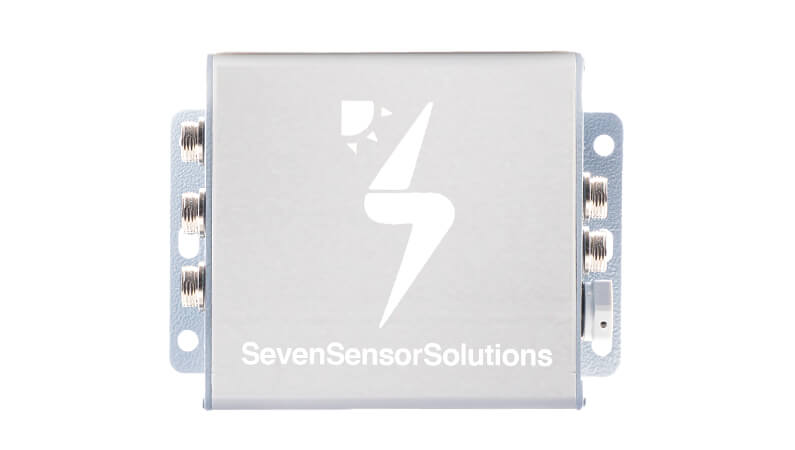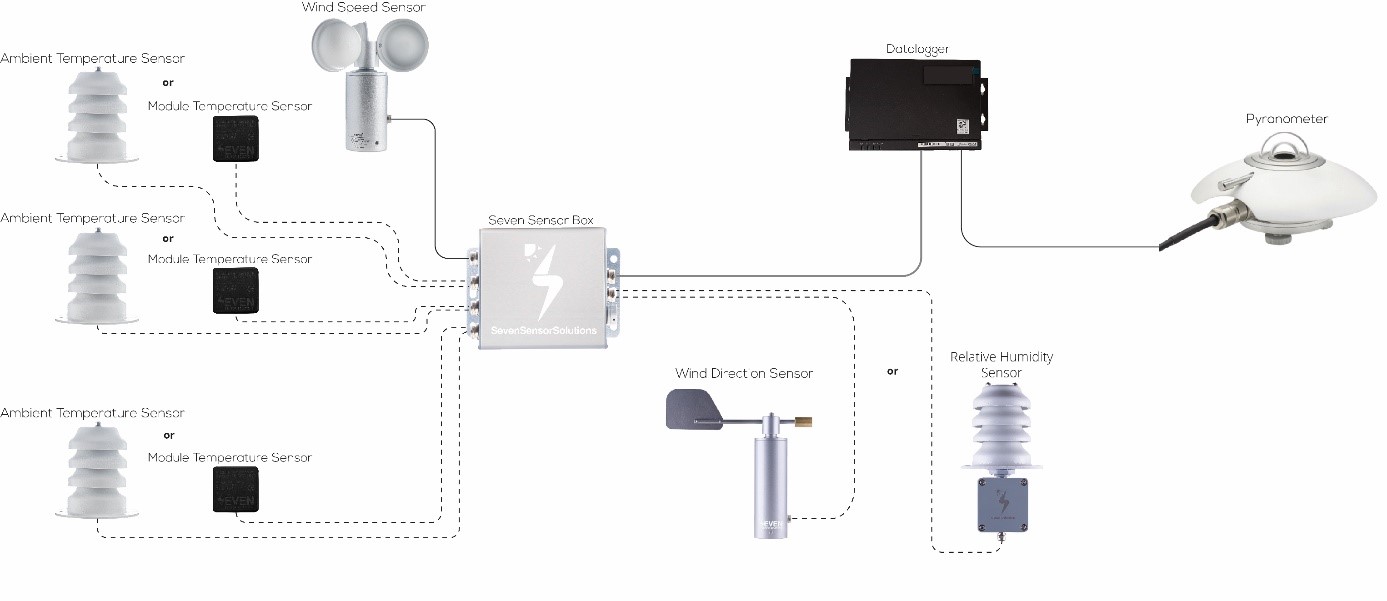Your cart is currently empty!
What is sensor box and how to use it in the weather stations?

Seven Sensor Box includes an electronic card where up to 5 different sensors can be connected and transfers data via Modbus RTU protocol to the datalogger or SCADA system.
It is noteworthy that the sensor box doesn’t have any photovoltaic cells, which means that it is used only as a hub between the sensors and the datalogger.
When do we need Seven Sensor Box?
The best integrated weather station solution we offer is the irradiance sensor.
Seven Sensor Solutions offers its customers a wide range of sensors including irradiance sensors, which work as a sensor box as well. However, in some cases, the client is obliged to use the pyranometer instead of the irradiance sensor due to the project specifications. In this case, the sensor box is the ideal solution to collect the data from other sensors and sent on RS485 cable with Modbus RTU protocol to datalogger.

What are the factors affecting the performance?
There are a lot of factors affecting the performance of the solar energy plant. Let’s understand some weather factors that affect the output of Solar Power System:
Temperature
One of the most common myths surrounding solar energy is that panels function better in high temperatures. However, high temperatures decrease the productivity of solar cells; high temperatures lead to a drop in current and a drop in overall power. Hence, whenever a single temperature rises above 25˚C, solar panel output reduces by:
- 25% for amorphous cells.
- 0.4-0.5% for crystalline cells.
In the summer, high temperatures increase the temperature of the panel. Their temperature can easily reach 70 ˚C, at which point the panel’s efficiency will decrease. As a result, the power will decrease by 12-25% compared to the power rate at 25˚C.
Wind Speed
Wind makes the solar panel temperatures cooler, which improves efficiency. Rarely, wind can increase the temperature of the panels. We can describe the relation between temperature and solar cell performance as follows: when the temperature decreases, the panels become cooler, which means higher power generation.
Relative humidity
The humidity reduces efficiency by two methods:
- The accumulation of water vapor on solar panels can make an insulating layer that will reflect sunlight away from solar cells. This reduces the amount of sunlight hitting the solar panels and as a result, reduces the produced power.
- For crystalline silicon cells and thin-film modules, humidity and hot weather decrease the efficiency of the solar panels. But cadmium telluride (thin film) solar cells perform about 5 percent better in tropical climates.
As we mentioned, these weather parameters affect the solar plant, and without detecting them, it will be a problem for a long time. The weather station helps you to measure the weather parameters in the real time, and provide this data to the dataloggers, so that the monitoring system will calculate the performance ratio by comparing what is really produced with what it has to be produced (data received from the weather station). Photovoltaic (PV) system performance depends on both the quality of the system and the weather.